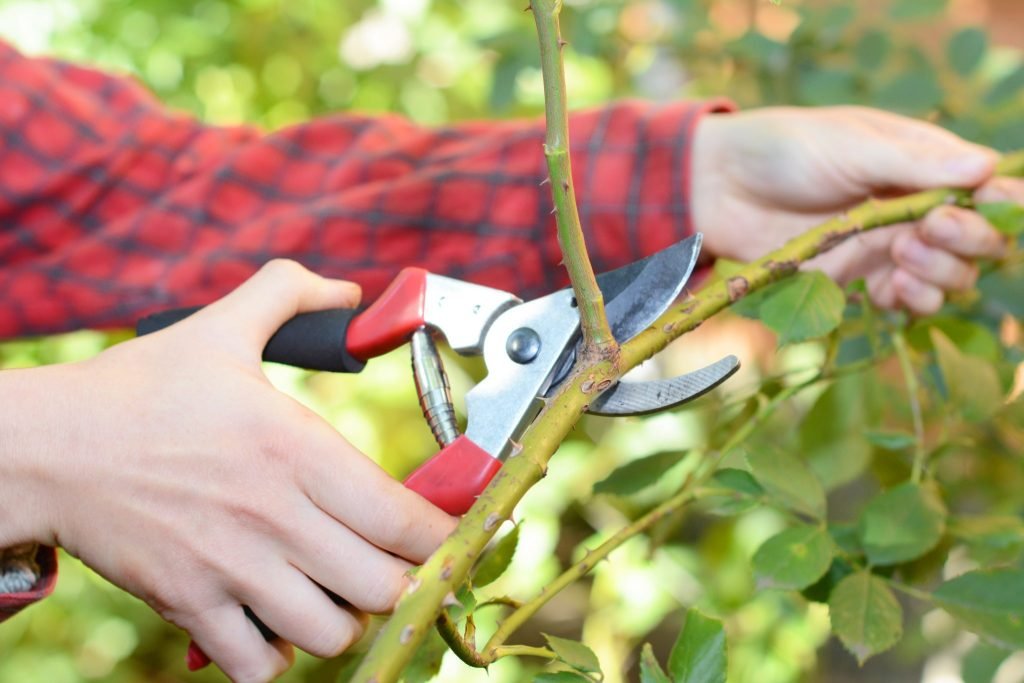
These 8 Trees Cannot be Pruned in October Early Fall is a Risky Time
Fall is full of rioting colors, pleasant weather, and winter preparation. For most homeowners, this is the time for maintenance both in the garden and in the trees. But do you know that pruning some trees in October could be counterproductive?
Pruning at the wrong time makes them susceptible to disease and frost damage, stunting their growth.
Before you get started on any fall tree care, it’s very important to know which trees should not be pruned during that time. Often early fall is a very precarious time in tree maintenance because of changing temperatures and active diseases.
Why Early Fall is a Bad Time to Prune Trees

The only problem with pruning trees during the early fall, more specifically in October, is that most trees are preparing for dormancy by slowing active growth to conserve energy for the cold months.
When trees are pruned during this transitional period in trees, it can spur on growth not wanted. These cuts signal the tree to produce new shoots or leaves, which are highly susceptible to frost damage and won’t have enough time to harden off before winter.
Furthermore, trees that undergo pruning in the fall are more prone to infections since cooler and wetter conditions are suitable for fungal diseases.
Besides that, insects carrying tree diseases are active during the fall season, and any cuts or wounds made at this time could be attractants to pests and pathogens. Pruning your trees in early fall will just weaken them, instead of setting them up for the cold weather ahead.
Keeping trees healthy is another good reason for learning when and how to prune trees based on species.
8 Trees You Should Never Prune in October

The following are eight types of trees that you should leave alone this month. Pruning them too early will only result in severe damage or even the death of the tree.
1. Oak Trees
- Why Not to Prune in October: Oak trees are highly susceptible to a deadly fungal disease called oak wilt. The fungal disease can be carried from one tree to another by beetles.
These beetles are attracted by the fresh cuts which may be made by pruning and infecting the tree this could lead to a rapid decline in health and death.
- Best Time to Prune: Winter, when oak beetles and the fungus are not active.
2. Maple Trees
- Why Not to Prune in October: Maples are notorious for “bleeding” sap when pruned in the fall. This heavy sap flow can weaken the tree and attract pests like borers or aphids.
- Pruning Time: This is usually done in late winter or early spring. The sap flow will be much less at this time, and it will recover promptly before its growing season commences.
3. Birch Trees
- Why Not to Prune in October: Birch trees are also heavy sap producers, and pruning them in fall can lead to excessive sap loss, leaving the tree stressed and susceptible to infections.
- When to Prune: Like maple trees, this tree variety would do best if pruned in late winter or early spring to avoid sap bleeding and any disease that may come along with it.
4. Elm Trees
Why Not Prune in October: Pruning elm trees during fall exposes these trees to Dutch elm disease, a deadly condition spread by flying beetles, which are usually active during the early fall.
These flying beetles carry a fungus that can quickly devastate elms.
- When to Prune: Prune elm trees in winter when the beetles’ activities are low and the tree has gone dormant.
5. Dogwood Trees
- Why Not to Prune in October: Dogwood trees are susceptible to dogwood anthracnose, a fungal disease that thrives under cool, wet fall conditions. A wrong-time pruning might just give the disease an entry point.
- When to Prune: The best time of the year to prune dogwoods is late winter or early spring. This allows the tree sufficient time to heal before growing starts.
6. Cherry Trees
Why Not to Prune in October: Cherry trees are particularly prone to silver leaf disease, a fungal disease that tends to spread when cuts are made in fall. Silver leaf is active in damp, cool weather-most of all in October.
- Pruning Time: The best time for pruning cherry trees is late in the winter because the chance of infection is significantly lower, and it has time to heal before spring.
7. Willow Trees
- Why Not to Prune in October: Willows are prone to canker diseases and fungal infections if they are pruned during the fall. Such infections love the cool, wet environment in the early fall.
- Prune: The safest time to prune this willow tree would be in late winter, wherein the tree will remain dormant and the risk of infection will not be apparent.
8. Walnut Trees
- Why not prune in October: These trees also have the habit of bleeding sap during fall pruning, just like maples and birches. It loses a lot of sap, which is one of how the tree becomes weakened and attracts the attention of pests and diseases.
- When to Prune: Prune walnut trees in late winter when the sap flow has stopped, and the tree is in its dormant stage.
Timing Your Pruning
Pruning your trees at the wrong time of year can cause long-lasting damage. Not only does it create more vulnerabilities to infections and pest attacks, but this may also lead to stunted growth of the tree and a lack of hardiness in survival during harsh winters.
As for timing, everything is just about perfect.
The best time to prune most trees is during late winter or early spring. This is the time when trees are dormant, thus not growing, and they channel all their energy into healing cuts, putting energy into new growth.
Best Practices for Safe Tree Pruning
Following are some important tips to keep in mind when pruning any trees to ensure healthy and thriving growth:
- Use clean, sharp tools: Always clean your pruning tools before and after use to prevent the spread of disease between trees.
- Avoid over-pruning: Never take more than 25% of the branches of a tree within one season. Over-pruning can be shocking to the tree, making it more vulnerable to pests and diseases.
- Cut at the right angle: Make clean cuts at an angle near to the branch the swollen area where a branch meets the trunk to enable the wound to heal properly.
Protect Your Trees-Prune Them at the Right Time
Pruning is very important to your trees’ long-term health and shape, but the timing needs to be appropriate. Avoid oak, maple, birch, elm, dogwood, cherry, willow, and walnut trees in October, as this would encourage diseases, stress, and frost damage.
Late winter or early spring provides the most opportunity for trees to head into the growing season and recover from pruning.








